Reaves reins in fists of fury
Enforcer changes approach to suit new rules, faster game
Advertisement
Read this article for free:
or
Already have an account? Log in here »
To continue reading, please subscribe:
Monthly Digital Subscription
$19 $0 for the first 4 weeks*
- Enjoy unlimited reading on winnipegfreepress.com
- Read the E-Edition, our digital replica newspaper
- Access News Break, our award-winning app
- Play interactive puzzles
*No charge for 4 weeks then billed as $19 every four weeks (new subscribers and qualified returning subscribers only). Cancel anytime.
Read unlimited articles for free today:
or
Already have an account? Log in here »
Hey there, time traveller!
This article was published 01/12/2016 (2701 days ago), so information in it may no longer be current.
ST. LOUIS — For Ryan Reaves, hockey has always been a game of survival.
Reaves, a native of Winnipeg and resident tough guy for the St. Louis Blues, has gone toe-to-toe with the biggest and baddest in the National Hockey League.
According to hockeyfights.com, a website that tracks a player’s fighting history, Reaves has fought 57 times at the game’s highest level, including a personal best of 13 fights in 60 games with the Blues during the 2011-12 regular season. If you count his time in the Western, East Coast and American leagues, the total rises to a whopping 117 times Reaves has dropped the gloves over his pro career.
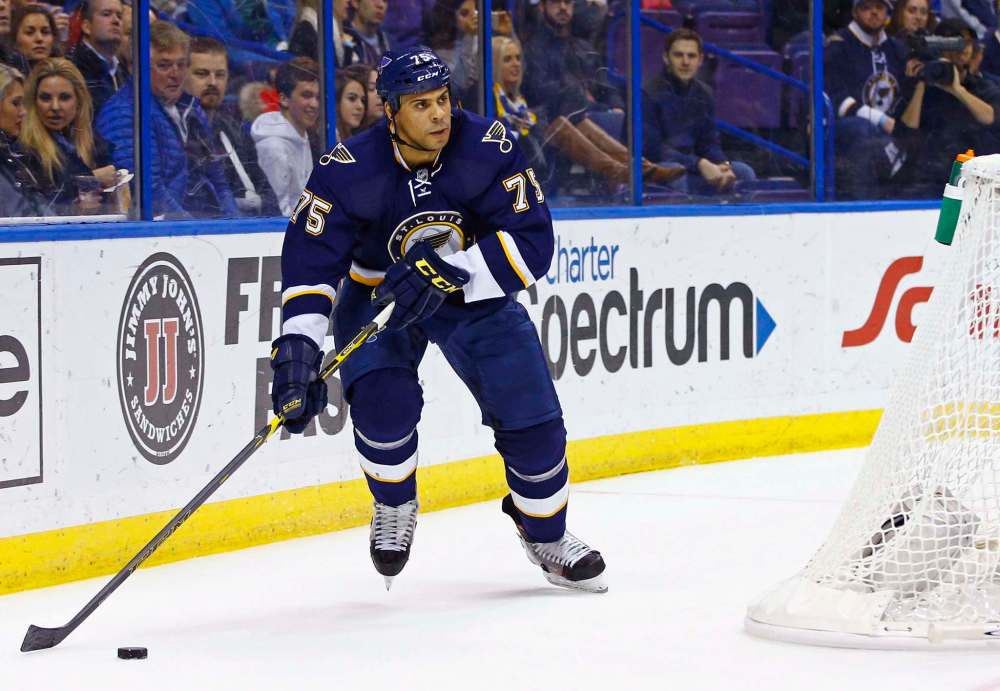
He usually wins. Rarely, he said, has he lost.
“I wont say I’ve ever got beat up or clearly lost a fight or got knocked out,” said Reaves, 29, Friday following practice at Scottrade Center, where the Blues are set to face the Winnipeg Jets today.
“I think the worst I’ve ever felt after a fight was with Brian McGrattan (of the Nashville Predators). I caught him with one over his eye and he was cut, but I left that game with about eight golf balls on my head and couldn’t move my neck. I was just miserable for about two days.”
Now, Reaves, in his seventh season in the NHL, all with St. Louis, finds himself in a fight to keep his job.
With the NHL’s rapid evolution toward a faster game favouring more skilled players, fighting has taken a big blow — not a knockout blow, but jarring hook nonetheless.
Look no further than the number of fights over the past three years. Last season there were 344 fights in the NHL, down 27 per cent from the 469 tilts in 2013-14.
The decline in the number of fights, in part, is due to a number of new and updated rules installed in recent years, including updating the “instigator” rule, which tacks on an additional two-minute minor penalty and a 10-minute misconduct to any player deemed guilty of “starting” a fight; as well as the mandatory visor rule that came into play in 2013.
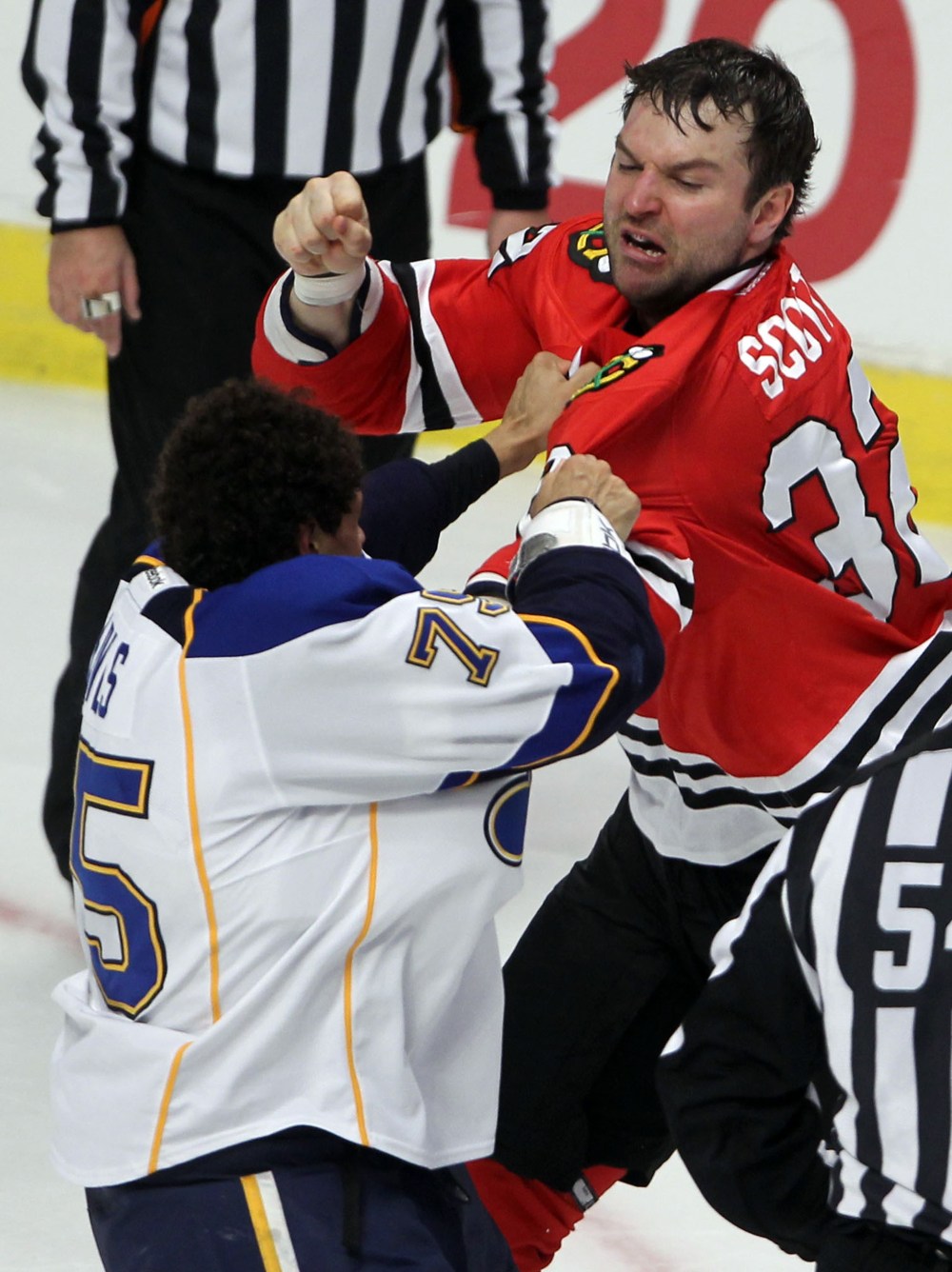
The current landscape has not only decreased the number of fights, but also the number of players dropping the gloves — a decline of nearly 25 per cent since the 2008-09 season.
It was during this time Reaves started to see the writing on the wall. With many former players he once brawled with either retiring or deemed no longer a fit for the NHL, he knew if he was going to continue playing the sport he loved he had to dedicate more time getting quicker with his legs, rather than his fists.
“As is the case in any job where the landscape changes, you’ve got to adapt with it, otherwise you’re going to be pushed out,” said Reaves, who has had one scrap (Columbus, Nick Foligno) this season. “The NHL is no different.”
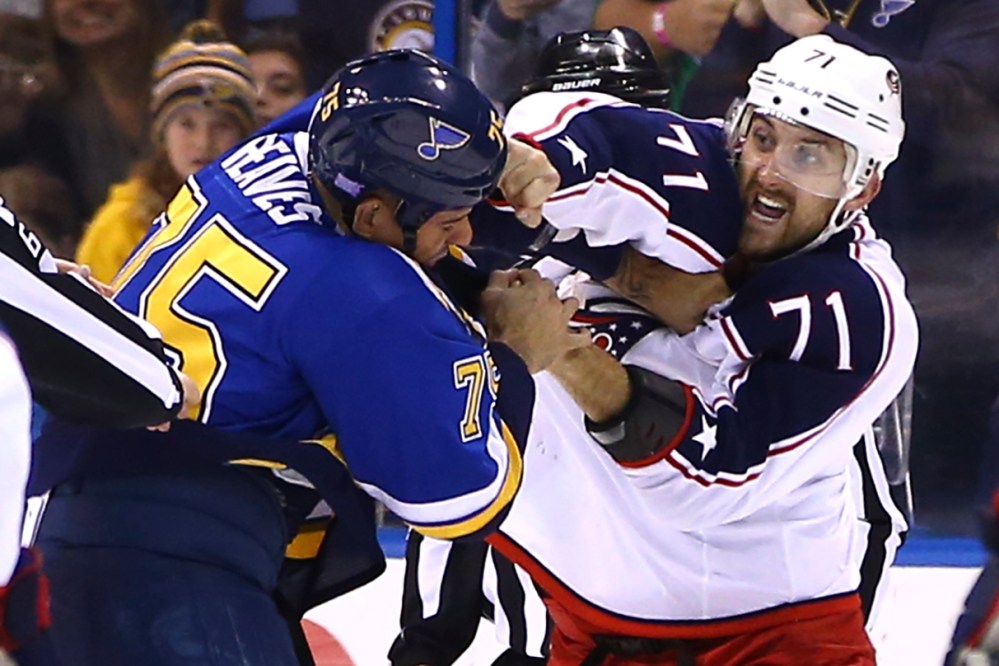
To prevent being pushed out, Reaves changed up his usual workout ritual this past off-season. He dedicated more time to increasing his endurance and speed and focused less on boxing. He pushed himself harder in drills that improved his skills with the puck; drills that would make him feel faster.
Twice over the summer he returned to St. Louis for week-long sessions, working one-on-one with Sean Ferrell, the Blues’ video and skill development coach. There, Reaves was put through a series of drills that included sprints, box jumps, and stickhandling, all while wearing a weighted vest.
“Everything to get my speed up as much as I can, get my legs strong,” said Reaves, adding he also shed five pounds. “I feel like I’m a lot faster; I’m keeping up with the pace; I’m getting to pucks first. I definitely notice a difference.”
He’s not the only one. Blues head coach Ken Hitchcock, a veteran of more than 20 years coaching in the NHL, has a reputation for being tough on his teams, constantly asking more from his players.
For much of last year Hitchcock and Reaves were engaged in talks about making Reaves a more well-rounded player; one that can keep up to the quickening pace of the game. At 6-1, 225 pounds, if he was going to be relied on in a four-line system, he needed to catch up to the pack.
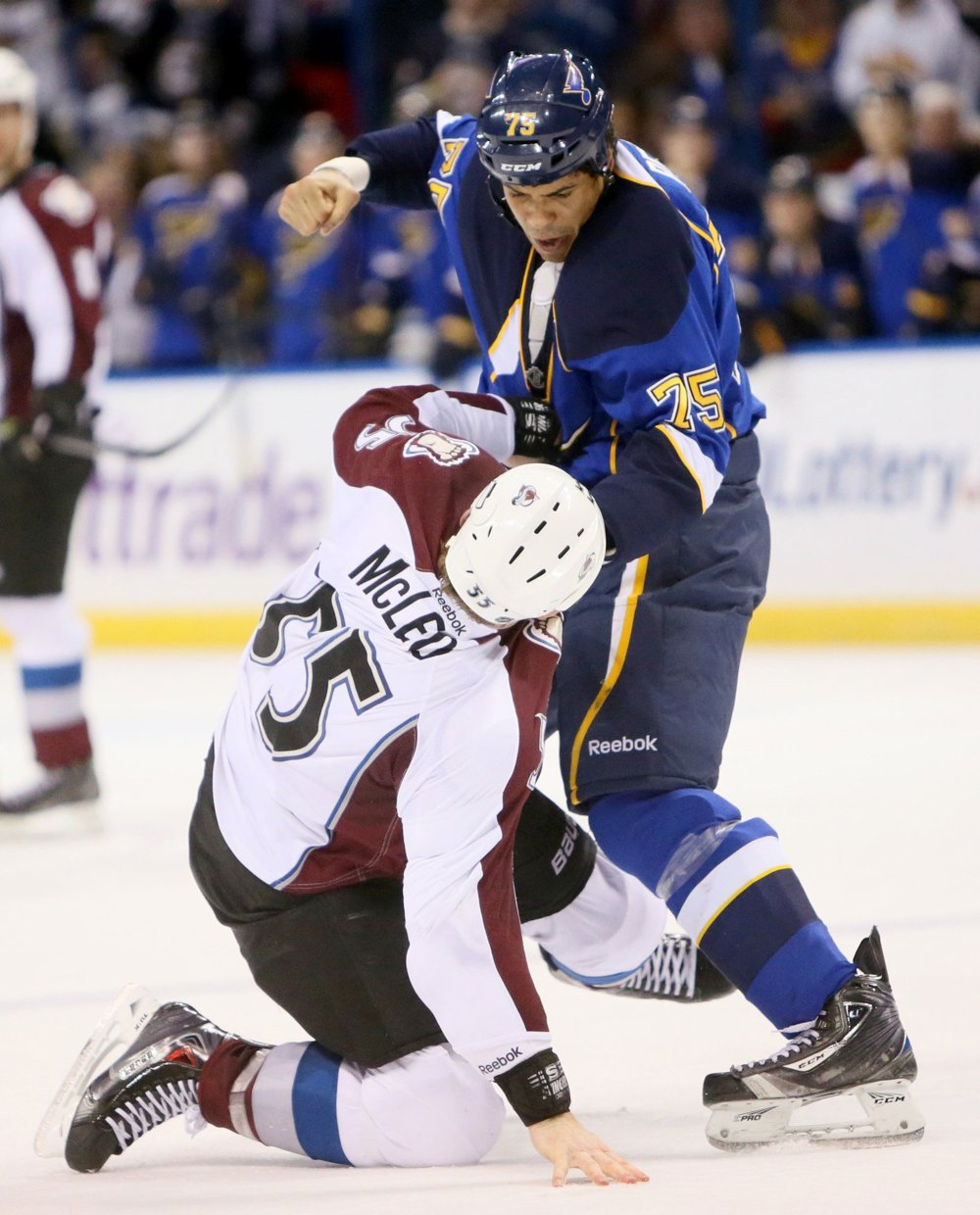
“He wasn’t able to sustain 40 seconds on the ice with the way the temperature of the game was,” said Hitchcock. “There were times last year where if we played him 10 minutes he was tired because he has to put so much in to every shift physically. When you’re a physical player like he is it’s really draining, it’s like five times what normal guys go through.”
The work Reaves did in the off-season paid dividends. The first week, Hitchcock said, Reaves was able to get a base for what he was trying to achieve. The second week, Hitchcock started to see results.
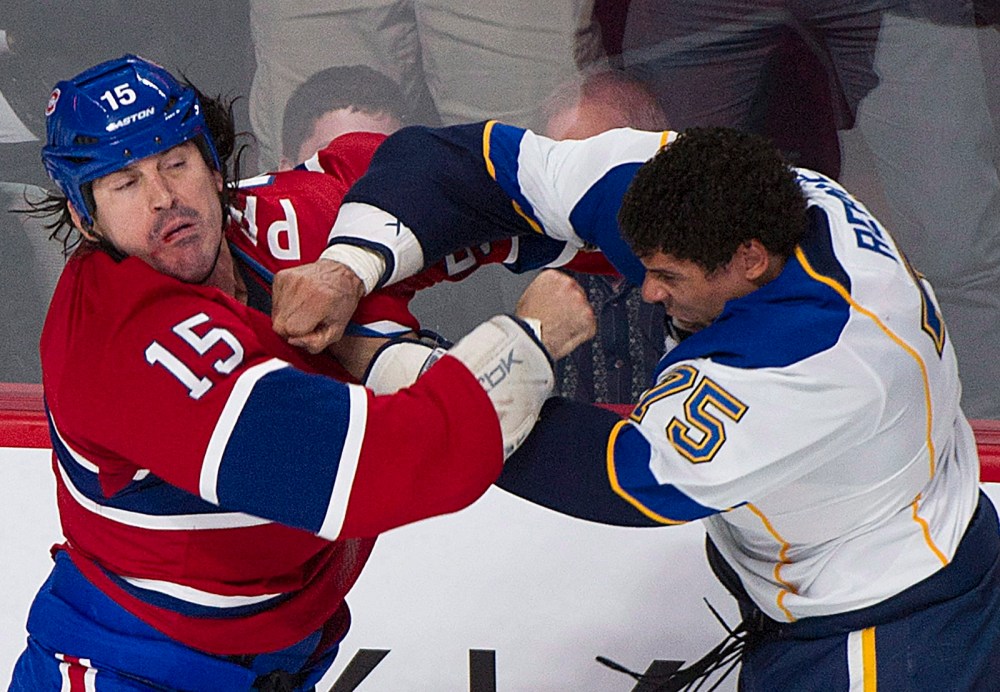
“No one has really seen the landscape of fighting change more than he has and no one has really adjusted to it more than him,” said Blues defenceman Kevin Shattenkirk. “Despite what he’s done to change his game he hasn’t lost that mean streak. When he goes out there guys are still looking over their shoulder for him. That intimidation, not many guys in the league have that anymore.”
Although he wishes the points would come easier — he has just two assists in 22 games this season and 40 points (20 goals 20 assists) in 361 career games — playing on the fourth line with Scottie Upshall and Kyle Brodziak, Reaves, who will turn 30 next month, said he is making better plays. Where he used to just dump the puck in, now, if he sees a chance to make a play, he has the confidence to do it — and the energy.
Reaves said he doesn’t know where the game is headed, but he does hope fighting remains in the game. He also hopes to be around.
“I’d like to say I’ve got another five years but you never know,” he said. “I’ve got one more year on this contract so I’m going to come back after that year and work for another one and see where it takes me.”
If that means adjusting to whatever the current climate is, he’s willing to do that, too.
jeff.hamilton@freepress.mb.ca
Twitter: @jeffkhamilton


Jeff Hamilton
Multimedia producer
After a slew of injuries playing hockey that included breaks to the wrist, arm, and collar bone; a tear of the medial collateral ligament in both knees; as well as a collapsed lung, Jeff figured it was a good idea to take his interest in sports off the ice and in to the classroom.







